Tesla models compared: if you’re considering the Model S, 3, X or Y, we show you the fastest, cheapest and best.
Tesla is a car company like no other. It brought electric cars to the mainstream with its first five-seat model, 2012’s Model S, and shocked legacy carmakers who suddenly looked 10 years behind. While the company might be best-known for its semi-autonomous driving tech and its controversial boss, Tesla’s impact on the current push to electric cars shouldn’t be underestimated.
When the Tesla Model 3 was launched in the UK market in 2019, it moved the game on again. Suddenly, there was a car with Tesla’s immense tech that rivalled the big-selling BMW 3 Series and, even though it’s not the newest EV on the block, it’s still a point of comparison for every electric saloon launched. With the Model 3 and the subsequent Model Y SUV, Tesla has become one of the biggest-selling carmakers in Britain.
Its products are impressive, but they’re also backed up by arguably the UK’s best charging network. With its Tesla Supercharger network, the US carmaker has taken control of charging infrastructure. Go to most motorway service stations and you’ll see a huge bank of Tesla chargers, and they’re found in a lot of other destinations as well. You’ll usually be able to get a vacant one, and they typically work as well – unlike some of the other charging networks you might come across.
Tesla models compared
Tesla Model 3
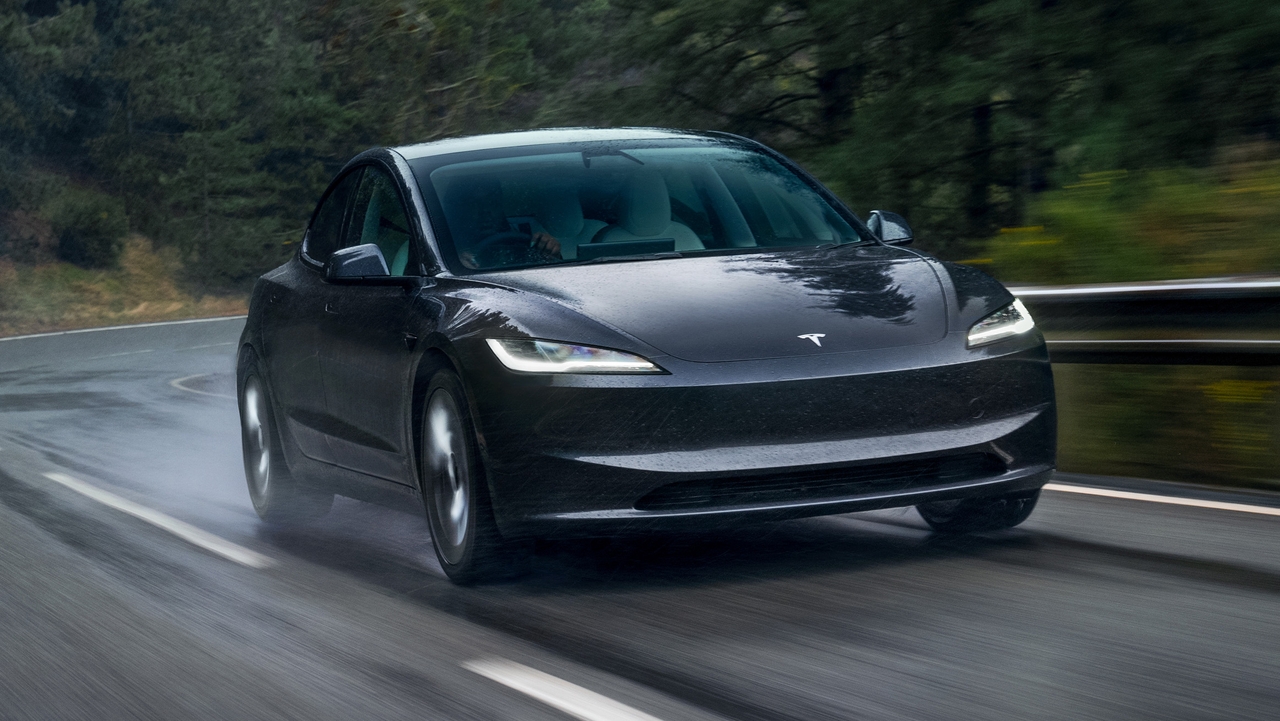
The Tesla Model 3 is the one you’re most likely to see on the road. It’s Tesla’s cheapest car, but is still capable of over 300 miles between charges and acceleration that’ll see off a sports car. Inside, there’s a stunning array of tech and space for a family, and the boot is a decent size.
The Model 3 is available in Standard Range Plus, Long Range and Performance variants. The Standard Range Plus has rear-wheel drive and one electric motor, while the others have a motor on each axle and all-wheel drive. Even the ‘entry-level’ Standard Range Plus model offers a 278-mile range – that’s more than the majority of mainstream EVs and more than most versions of the Volkswagen ID.3. Long Range versions return up to 374 miles. Only a handful of much more expensive EVs offer more than that.
An update in 2024 brought an increase in range, with up to 436 miles now possible for Long Range RWD versions, and entry-level Model 3s managing up to 318 miles on a charge. The ‘Highland’ update also removed the few remaining buttons and stalks from the interior, and brought smaller, more piercing headlights.
Tesla Model Y
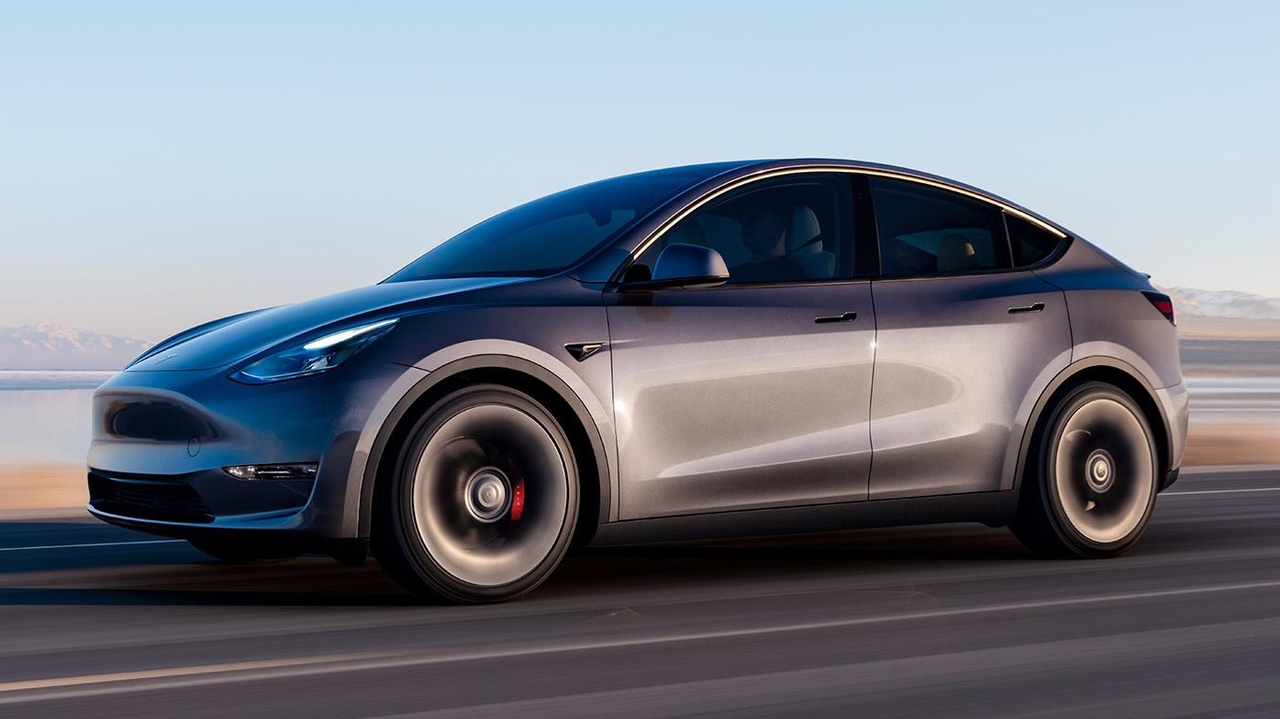
The Tesla Model Y is the company’s most recent car launched in the UK. It looks familiar, doesn’t it? Well, 75% of the Model Y’s parts are shared with the Model 3, but it’s just a bit bigger and taller. Take all the positives from the Model 3 and add a roomier interior with a hatchback tailgate, and you’ve got a nearly unbeatable electric family SUV.
For 2025, the Model Y has received a similar update to the refreshed Model 3. New Tesla Cybertruck-inspired light bars at the front and rear give a sharper, more modern look, and the car’s maximum range figure now stands at 387 miles. Deliveries are due to start in June 2025.
Tesla Model S
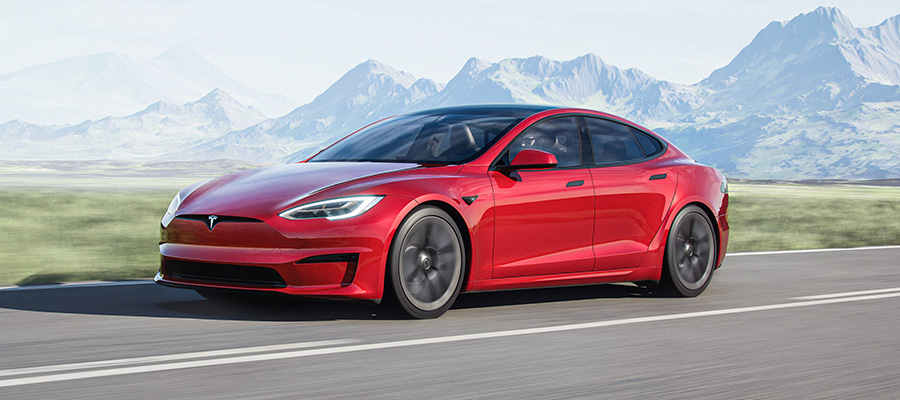
Tesla’s Model S hatchback kickstarted the success of the brand, and turned normal people into Tesla superfans. The basic design might be a decade old but a stream of styling, software and powertrain updates means it feels up-to-date inside. It’s no longer available to buy in the UK and, for the past couple of years, was only available in left-hand drive.
Tesla Model X
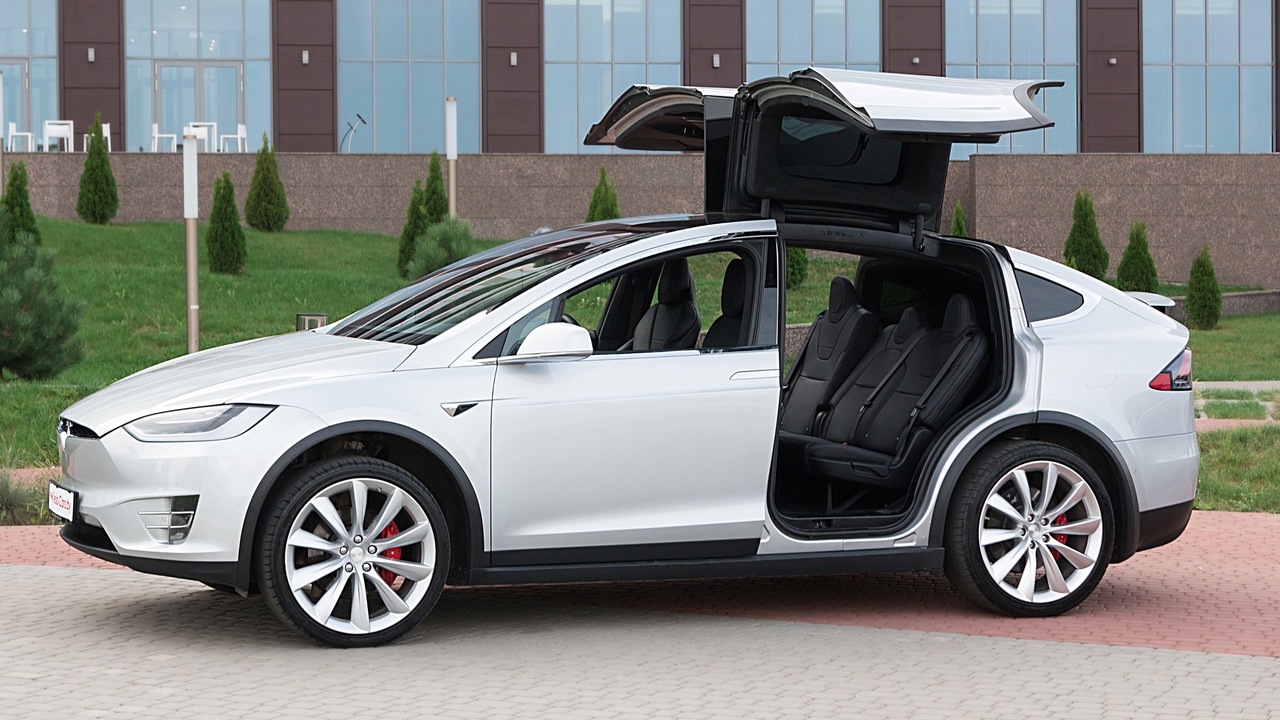
The Model X was Tesla’s first SUV and uses the same platform as the Model S. But there are a few extra reasons to choose the full-size Model X, like its seven seats and its ‘falcon wing’ rear doors. The upwards-opening doors are certainly theatrical, but they do also serve a purpose – they open in a much smaller space than conventional doors. Just think of it as Tesla’s take on a MPV’s sliding rear doors – but remember not to leave any open drinks in the doors before you lift them up!
Just like the Model S, the X bowed out of the UK market in quite an awkward fashion. Since it became left-hand-drive only, fewer than 40 people have bought one.
Cybertruck
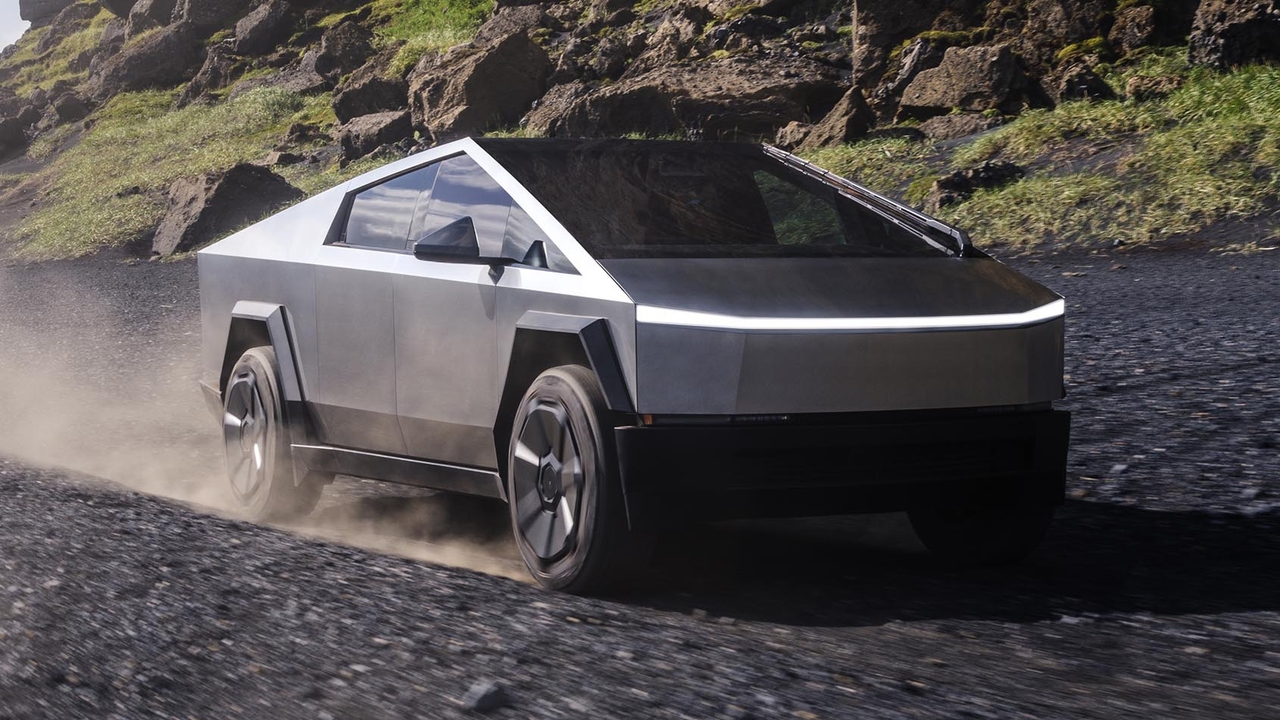
The internet’s most or least favourite car, depending on who you talk to. Its sharp corners make it illegal in the UK, but you’d probably find it too big and too unwieldy for our roads anyway.
Tesla Model X vs Model Y
Tesla’s SUVs both have a swooping shape to aid aerodynamic efficiency and therefore range. The Model X is a whopper – it’s five metres long and nearly 2.3 metres wide and, while that means plenty of space for people to stretch out, it does make it feel rather large when you’re trying to find a parking space.
The Model Y isn’t actually much smaller – at 4.8 metres long it takes up the same amount of road as an estate car. This means there’s still plenty of space for a family of four.
Additionally, the Model X feels quite old in some areas now, whereas the newer Model Y feels much fresher and more modern. And now that the Model X is off sale, the Model Y is the easy choice.
Tesla model comparison chart
| Range (miles) | Charging capacity | Power | 0-60mph | Boot size | |
| Model 3 RWD | 318 | 170kW (10-80% in 25 mins) | 279hp | 5.8s | 425 litres (including frunk) |
| Model 3 Long Range RWD | 398-436 | 250kW (10-80% in 27 mins) | 320hp | 4.9s | 425 litres (including frunk) |
| Model 3 LR AWD | 390 | 250kW (10-80% in 27 mins) | 527hp | 4.2s | 425 litres (including frunk) |
| Model 3 Performance AWD | 328 | 250kW (10-80% in 27 mins) | 627hp | 2.9s | 425 litres (including frunk) |
| Model Y RWD | 267-283 | 170kW (10-80% in 24 mins) | 299hp | 6.6s | 854 litres (laden to roof) (+115-litre frunk) |
| Model Y Long Range RWD | 351-373 | 250kW (10-80% in 27 mins) | 340hp | 5.7s | 854 litres (laden to roof) (+115-litre frunk) |
| Model Y LR AWD | 331 | 250kW (10-80% in 27 mins) | 514hp | 4.8s | 854 litres (laden to roof) (+115-litre frunk) |
| Model Y RWD (2025) | 311 | 175kW (10-80% in 18 mins) | 299hp | 5.6s | 854 litres (laden to roof) (+115-litre frunk) |
| Model Y Long Range RWD (2025) | 387 | 250kW (10-80% in 27 mins) | 340hp | 5.4s | 854 litres (laden to roof) (+115-litre frunk) |
| Model Y LR AWD (2025) | 353 | 250kW (10-80% in 27 mins) | 514hp | 4.6s | 854 litres (laden to roof) (+115-litre frunk) |
| Model Y LR AWD Launch Series (2025) | 353 | 250kW (10-80% in 27 mins) | 514hp | 4.1s | 854 litres (laden to roof) (+115-litre frunk) |
Which Tesla is the cheapest?
The cheapest Tesla is the Model 3, both new and used. New prices start from £39,990, while used Model 3s can be picked up for half of that, which makes them seem unbelievable value when you consider the technology and innovation on board. Because there’s an eight-year/ 120,000-mile battery warranty, a used Tesla could prove to be a hassle-free purchase.
Even the cheapest Model 3 comes with a panoramic sunroof, vegan leather-effect upholstery and a reversing camera – and, of course, the feature-packed 15-inch touchscreen.
Which Tesla is the fastest?
The fastest Tesla in the UK at the time of writing is the Model 3 Performance, with an astonishing 0-60mph time of just 2.9 seconds and a 163mph top speed. Want to go faster? You’ll need a SpaceX rocket.
Which Tesla is the most luxurious?
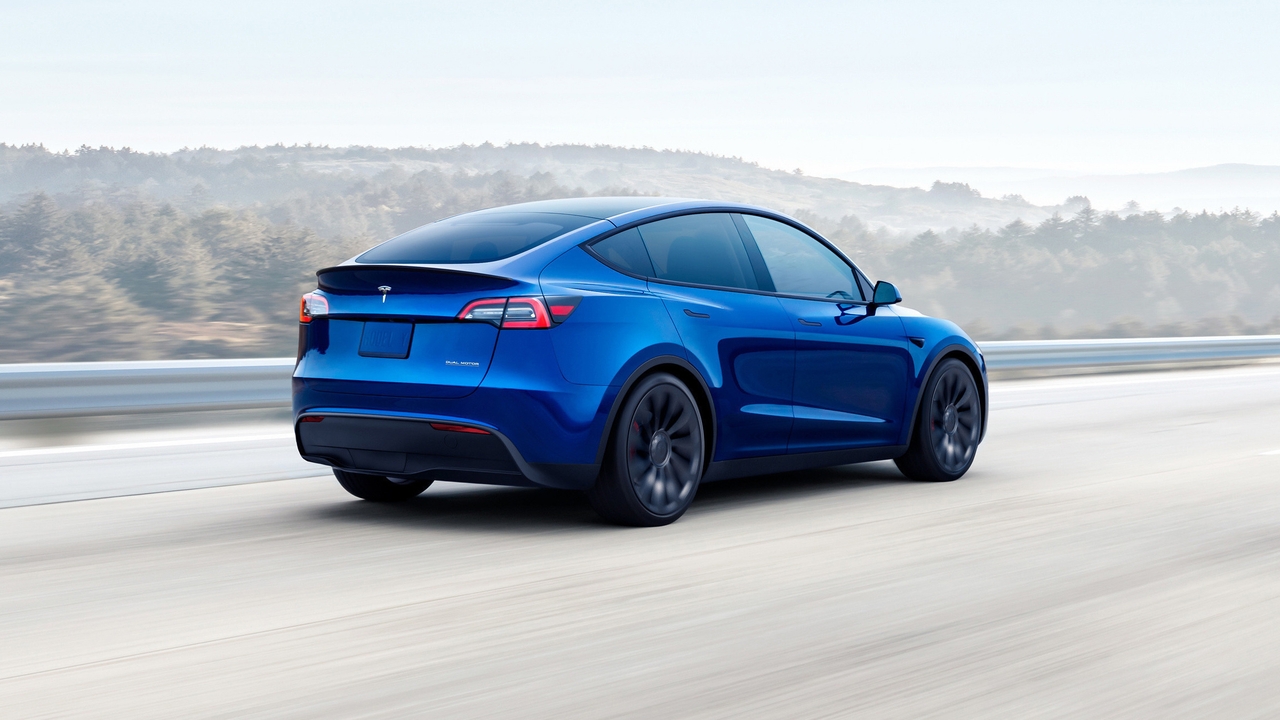
Now the Model X and Model S now no longer sold in the UK, the Model 3 and Model Y are, by default, the most luxurious Teslas. For the luxury of having lots of range and wet-weather grip, we’d choose the Model Y Long Range AWD.
Which Tesla model is the best value?
The Model 3 isn't just the cheapest Tesla, it also offers the best value for money. The main reason is that, while the more expensive models are definitely larger, the Model 3 is so practical already that you'll rarely miss the small amount of extra space you get in a Model Y or Model S. What's more, the Model 3 is a bit faster than an equivalent Model Y SUV and gets more range from the same battery pack, while also handling slightly sweeter thanks to the lower centre of gravity.
Best Tesla for commuters
Whether you’re only driving to the next town over or have a much longer commute, the Tesla Model 3 is a top choice. The Standard Range Plus model will offer the majority of buyers enough flexibility, while the Long Range model can’t be ignored for drivers who cover big distances or simply don’t want any range anxiety whatsoever.
Tesla’s Supercharger network might not be free to use any more, but the speed, convenience and availability it offers means that most drivers don’t mind paying. Often, a Tesla Supercharger is cheaper than other charging networks, and it’ll still cost you less than filling up a petrol car.
Best Tesla for families
The Model X might be bigger and have the option of seven seats (not to mention its child-wowing doors), but we’d recommend the smaller Model Y to family buyers. It’s still very spacious, costs roughly half the price of the Model X and was rated best-in-class in Euro NCAP’s 2022 safety tests. Kids will love watching the clouds and the stars through the standard-fit sunroof, and the two wireless phone chargers will keep teenagers’ iPhones charged.
Which Tesla model is the best?
The Model 3 and Model Y are the Tesla’s best models right now. They’re available, attainable and provide all the gadgets if you want to dazzle friends and family. If you need a larger boot opening for bulky items like pushchairs, sports gear or lots of suitcases, get the Model Y. If you don’t, get the quicker and more efficient Model 3.


































